Pop Shoes
Elevate your skatebaording to new heights.
Pop Shoes: SURGE
Project Overview
POP Shoes is a skateboarding footwear company that blends the highly engineered footwear technology which exists for traditional sports and brings that to the skateboarding market. The goal of this project was to solve a current problem that exists in the world for a physical product.
The project started with researching then identifying an unmet need in a physcial product category. Then design a product, brand, and experience around this problem. The project was completed over a 10 week period. The first 4 weeks of design research, market analysis, and opportunity identification I completed solo. After week 4, we pitched our design opportunities then formed teams to work on the the most exciting problems.
For this project, I worked along Shun Cheng Hsieh, who completed the final 3D model and Jacey Chen, who created the banner image and branding. My contribution included sketches for the footwear design, a 3D model in Blender, the final rendering in Keyshot, crafting the brand story and pitch deck, as well as creative direction.
The market has beefy protective options which sacrifice mobility and feeling. Other options prioritize aesthetics and a close connection to the board, which risk injury and bruising. All of the existing products in the market focus on aesthetics, protection, or minimalism. What’s missing is a finely tuned tool to reach higher levels of performance.
Background
Skateboarding takes a tremendous toll on the feet, high drops, slams, rolled ankles. However, skateboarding shoes, compared to many traditional sports, have not seen a high degree of technical advancement since its' origin in the 1960's and 70's. The market has beefy protective options which sacrifice mobility and feeling. Other options prioritize aesthetics and a close connection to the board which risk injury and bruising. ll of the existing products in the market focus on aesthetics, protection, or minimalism. What’s missing is a finely tuned tool to reach higher levels of performance. In traditional sports it's commonplace to see a premium product targeted at peak performance. Our goal with this shoe is to provide that level product for skateboarding.
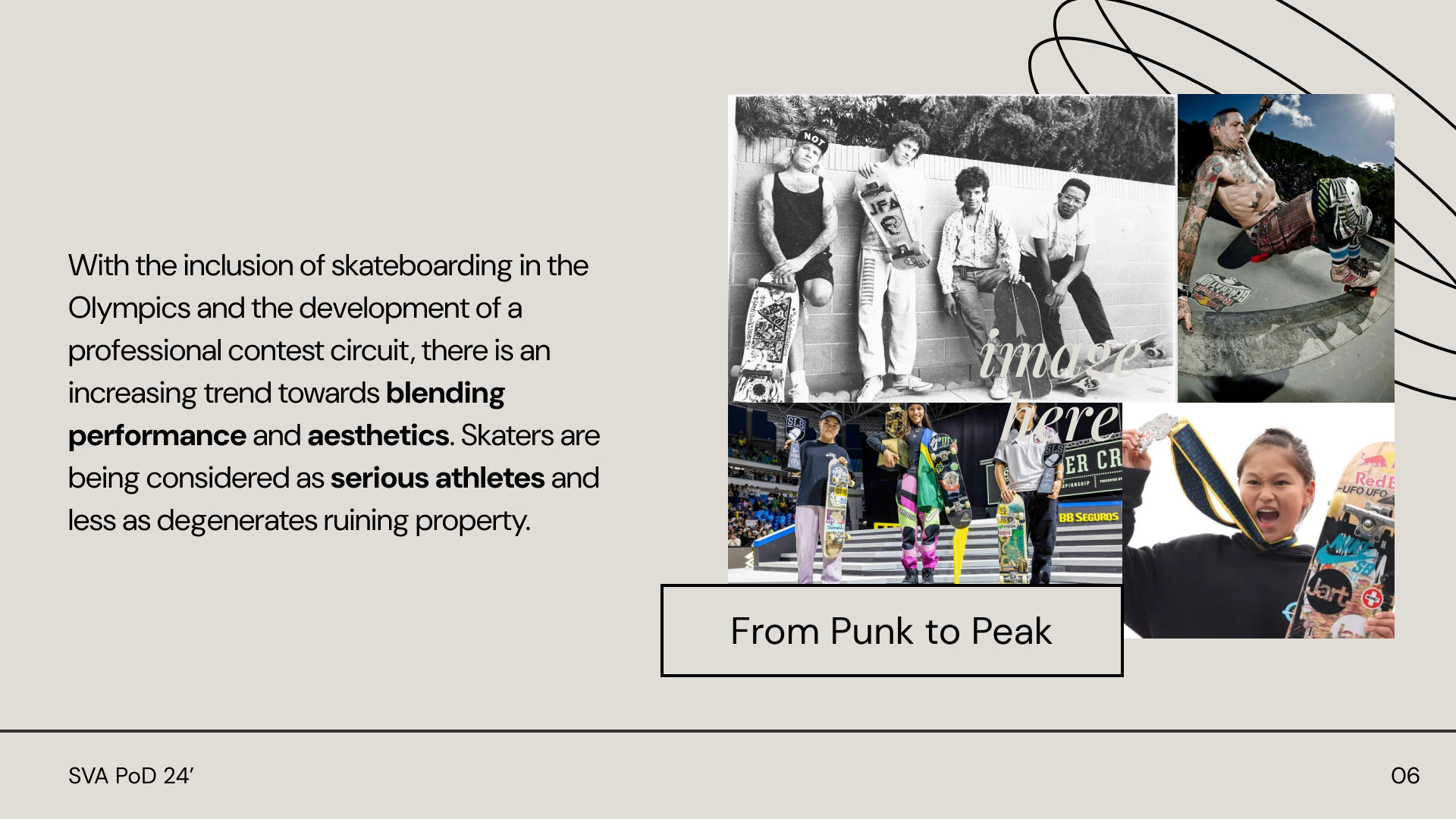
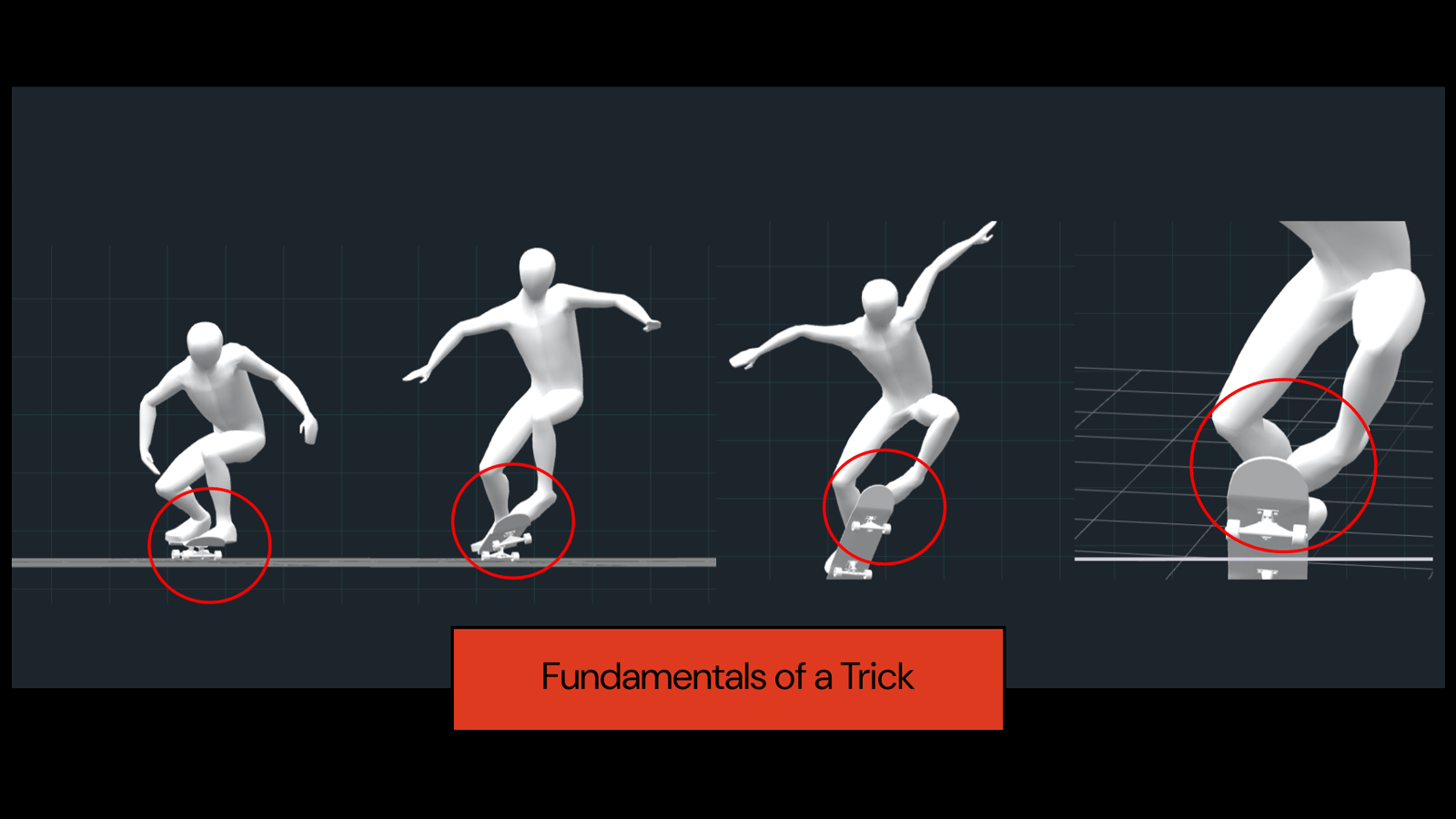
Process & Research
Our research included market analysis of the skateboard footwear landscape, cross-referenced with traditional sports such as soccer, running, tennis, and even rock climbing.
From the synthesis of qualitative and quantitative research, we created design principles revolving around jumping higher through energy return, grippiness, and injury protection. Our concepts evolved over the course of the project through a mix of sketching, physical prototypes, and material explorations. Because we had limited access to make physical samples, our final solution was conceptual. If we'd have had the resources to make this shoe a reality we absolutely would! Simultaneously, we created the branding for this product to blend the street culture of skateboarding with the technical performance aesthetic of traditional sports products.
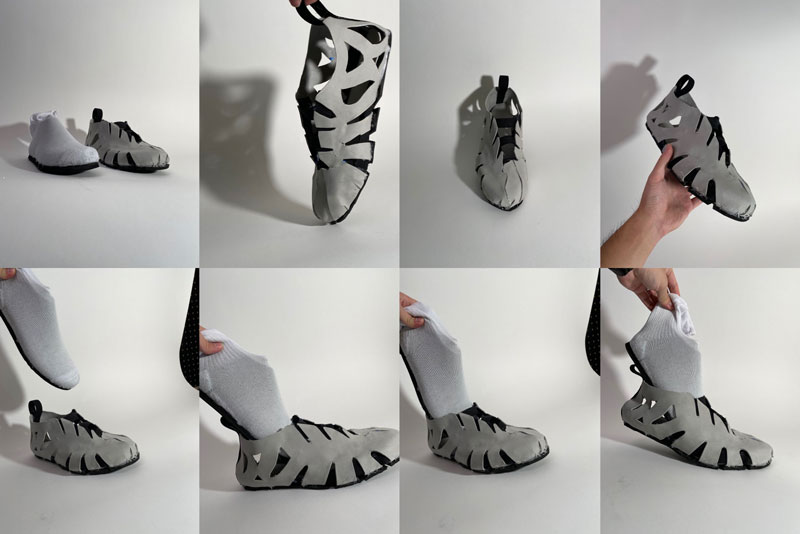
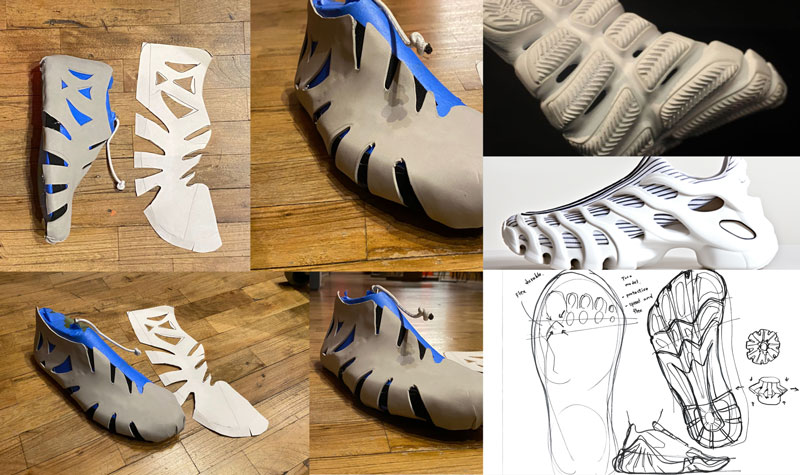
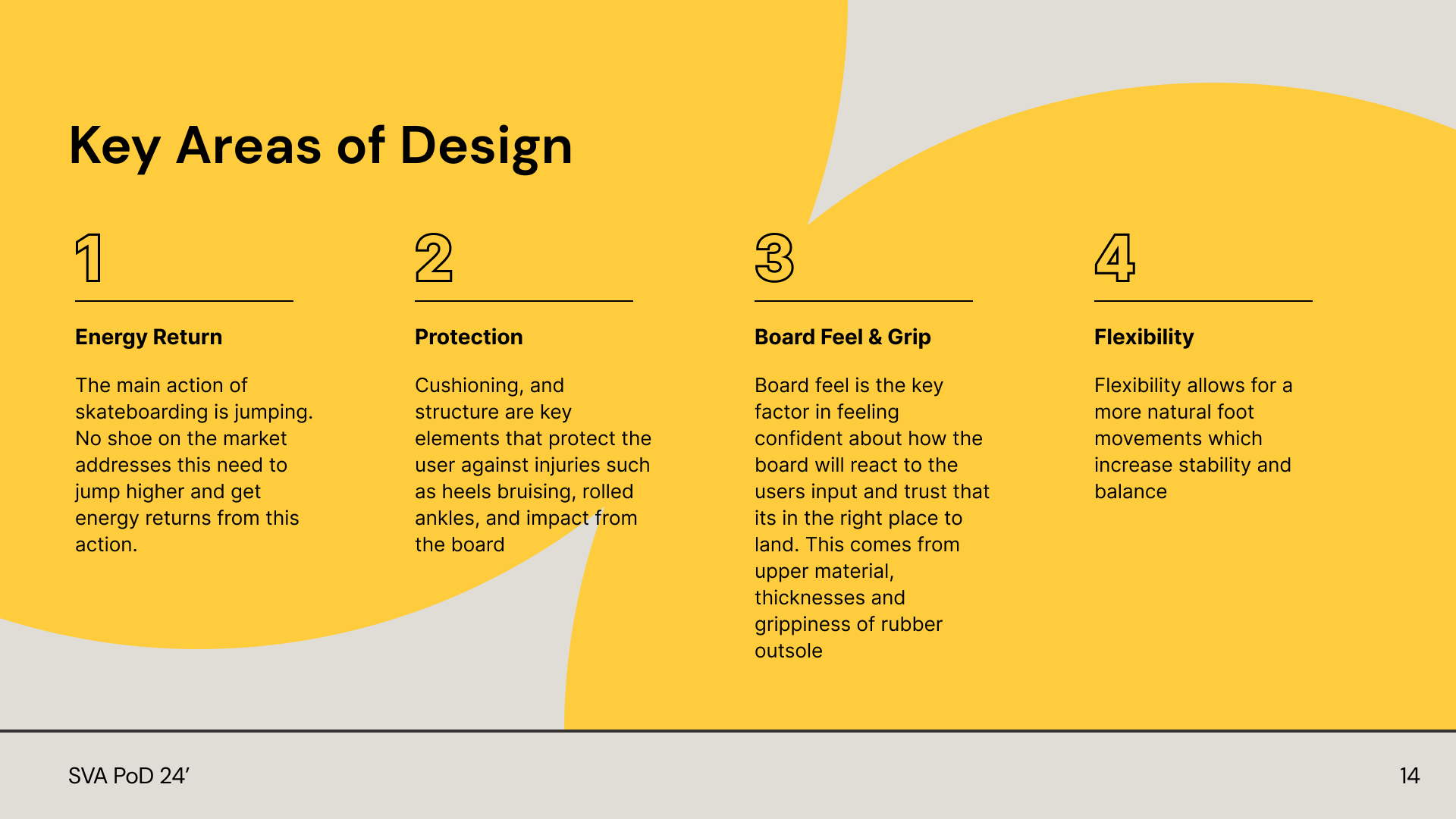
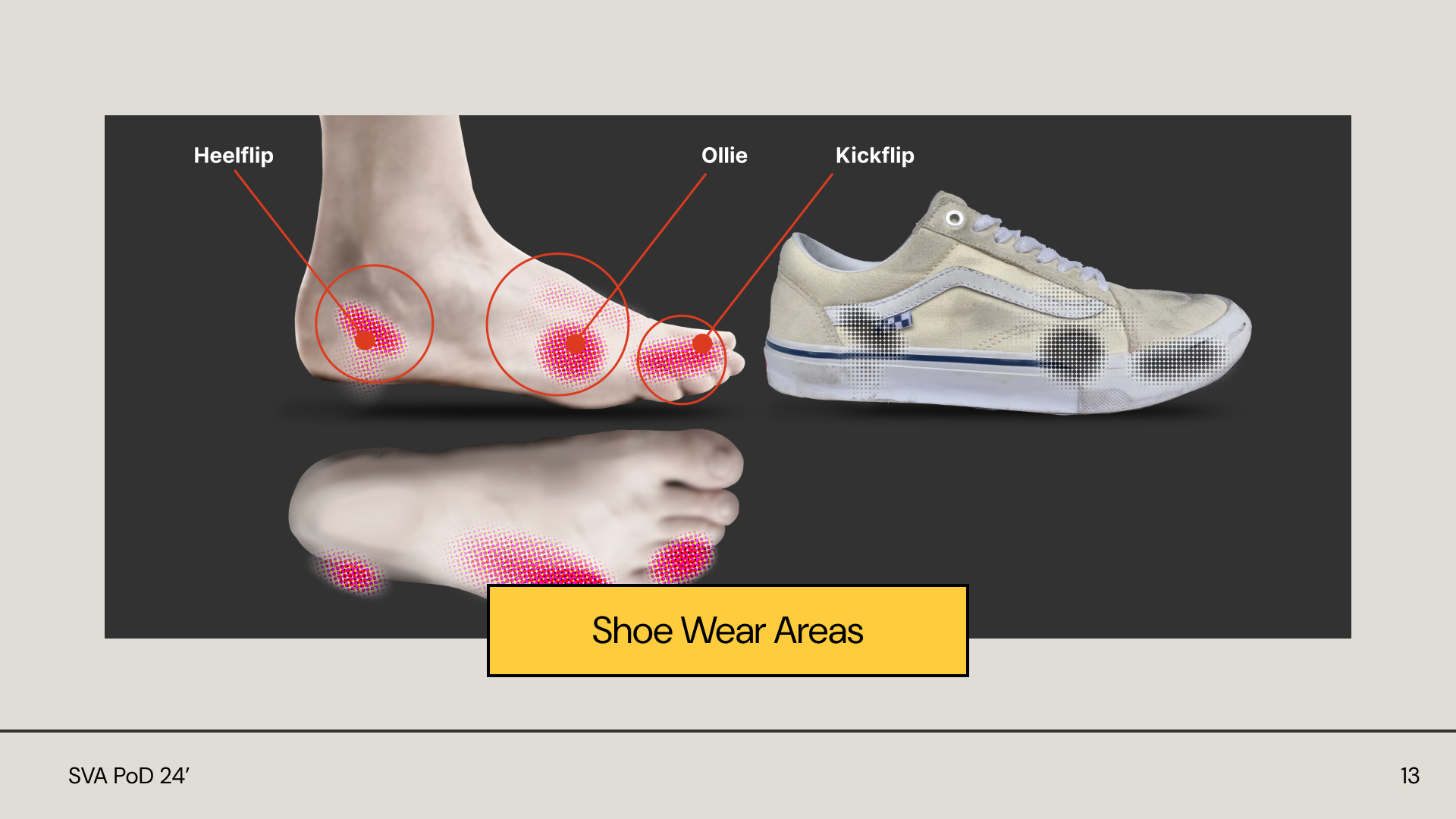
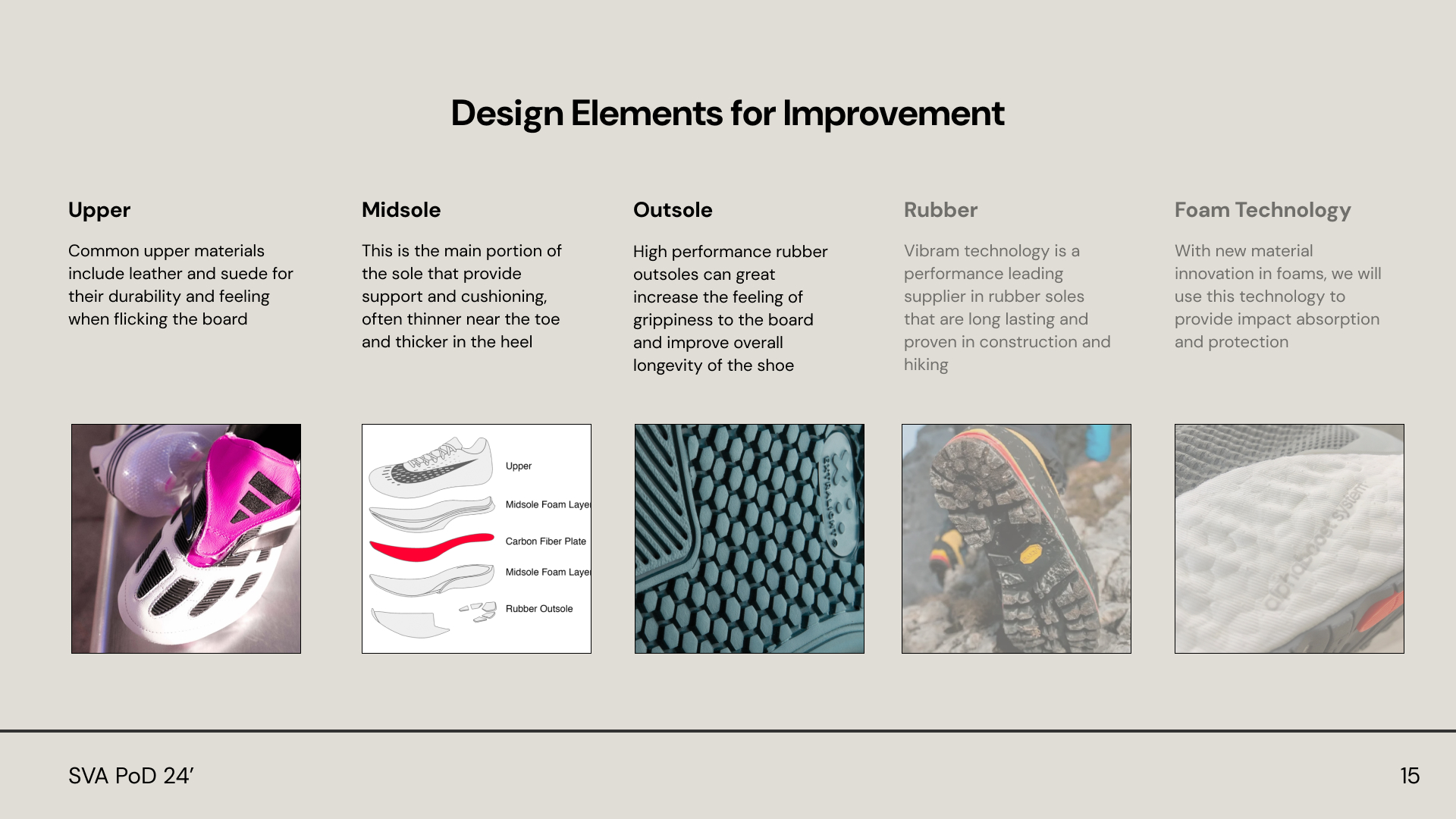
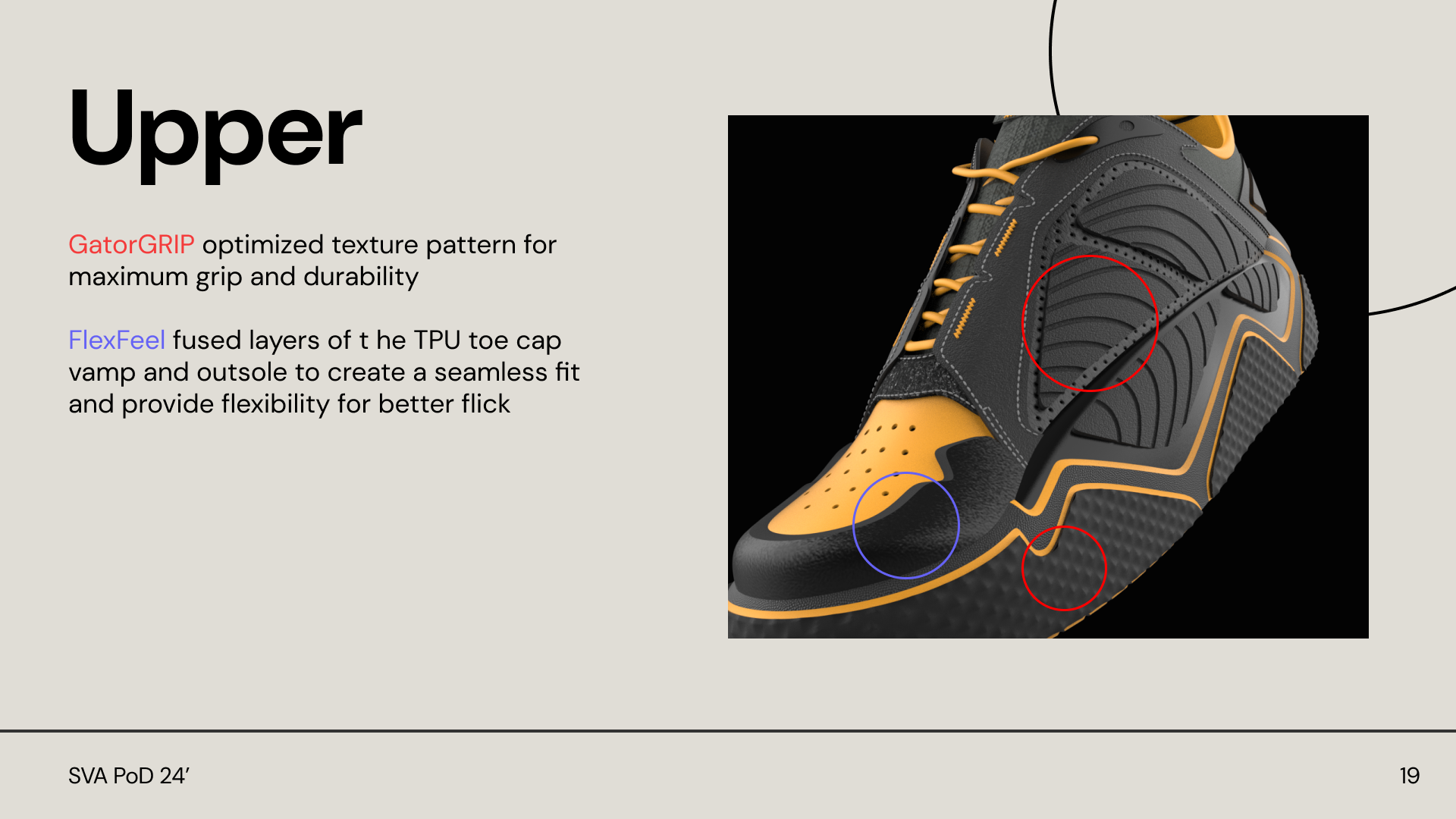
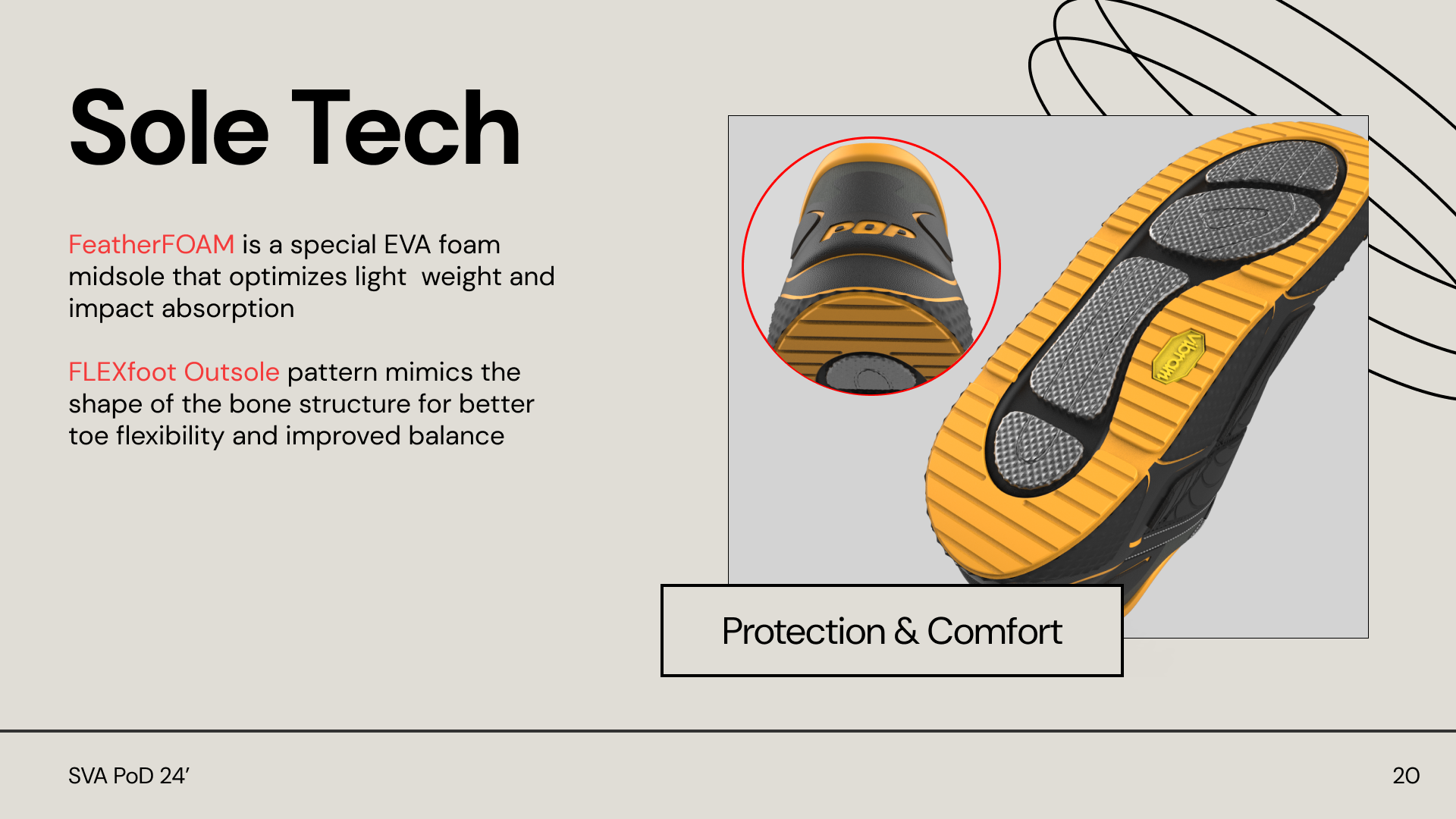
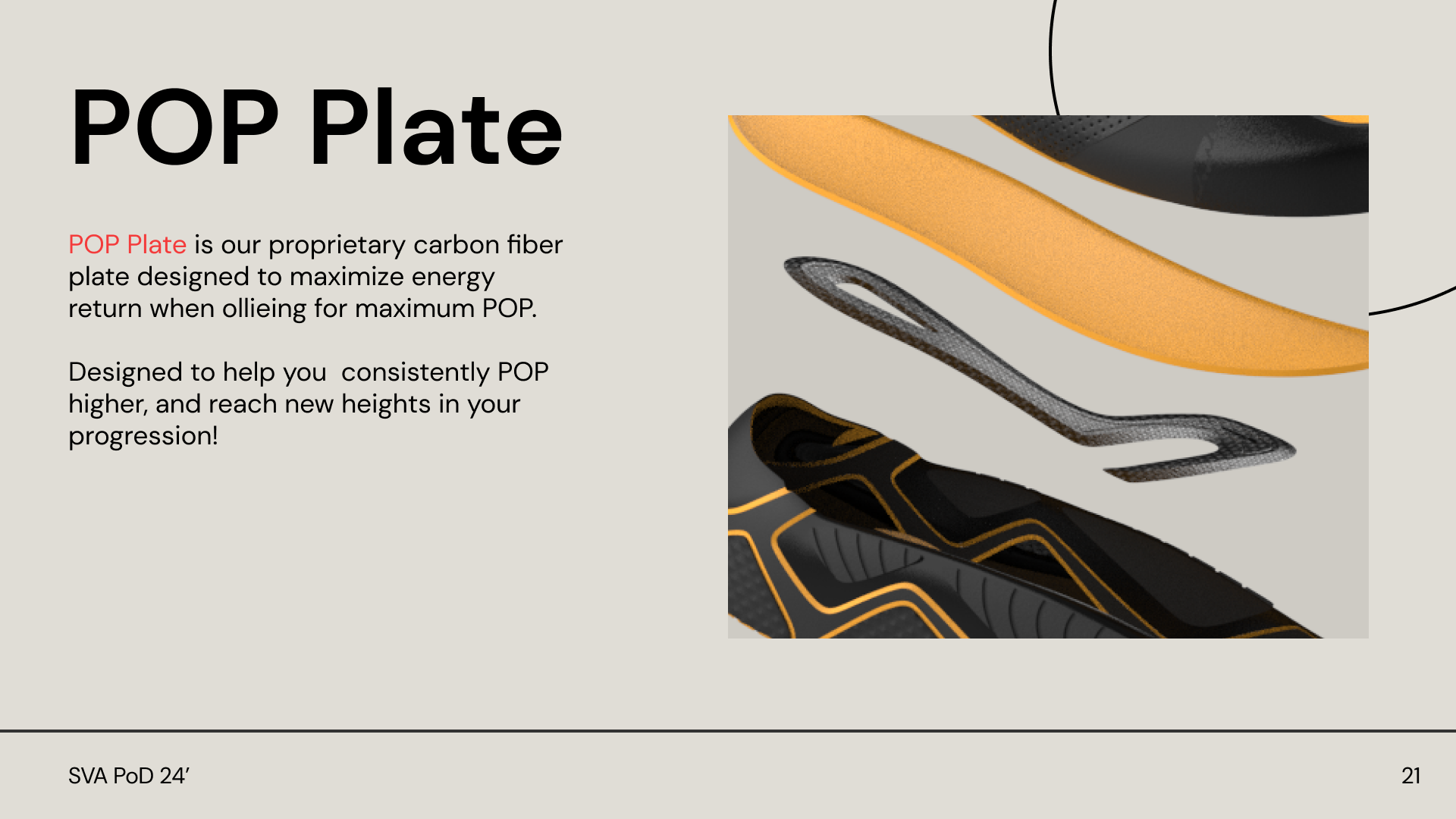

Outcome
The final deliverable of this project was a pitch deck to a professional audience. Hlynur Atlason of Atlason Studio provided valuable feedback and guidance on this project from conception to completion.
Successes
Our team worked together very well on this project. We collaborated in Figma, using it as a platform to share sketches, 3D model updates, and renders. We also held workshopping sessions where we sketched ideas and concepts to help push our design direction. We each brought valuable skills to this project. Jacey has very strong branding skills and Shun has over 5 years experience in footwear design. The team relied on my experience in footwear, and 20 years of experience in skateboarding.
Challenges
The challenges we faced on this project were the limitations of time and resources on our ability to bring this product to life. If we'd have had the means to create more prototypes and working samples, we could have progressed the work even further.
